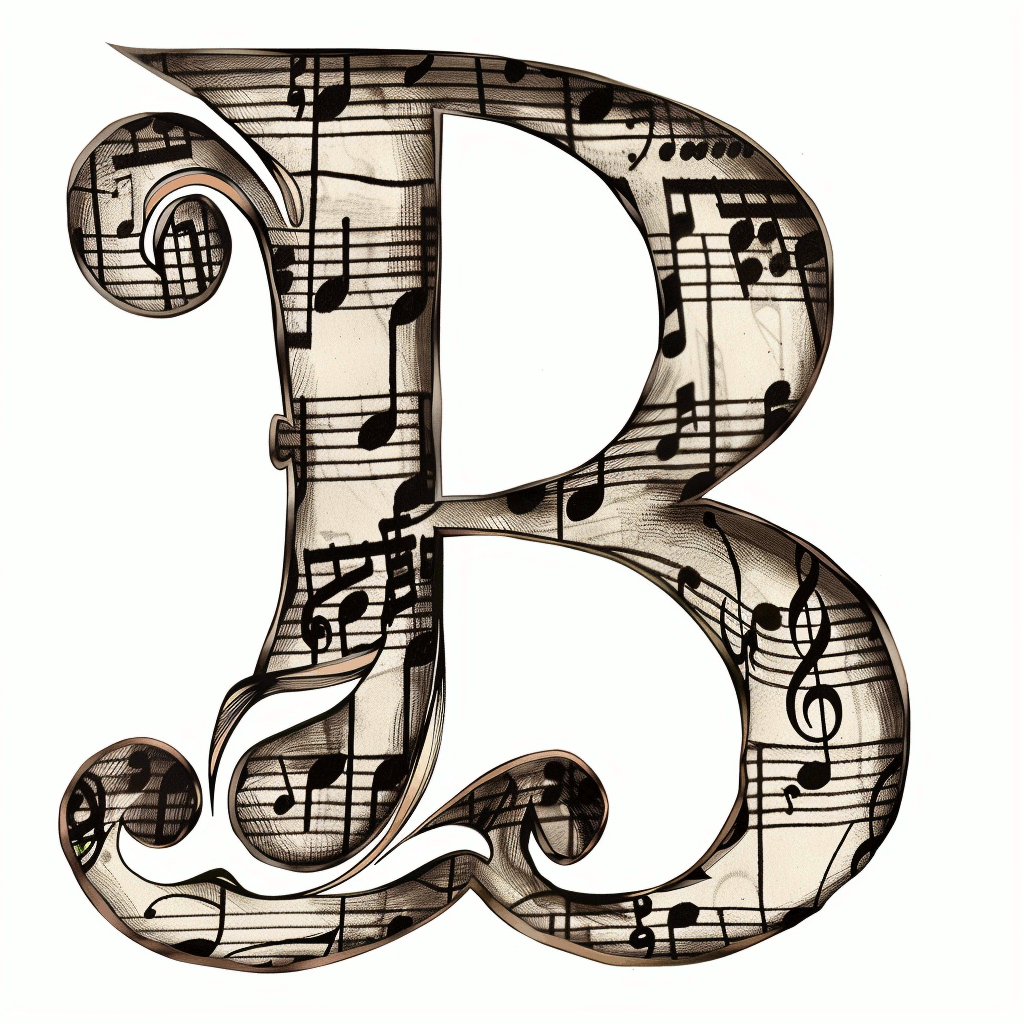A 7-string guitar can be harder to play than a standard 6-string guitar, yes. The additional low B string and wider neck of the 7-string guitar present unique challenges that require adjustments in technique and fingering. You might have issues at first accidentally hitting the B string or that left hand chords feel awkward.
Audio summary:
While the 7-string guitar offers exciting possibilities for guitarists, it also comes with its own set of challenges. In this article, we will explore the technical difficulties of playing a 7-string guitar, discuss tips for mastering the instrument, and delve into its applications in various musical genres.
Challenges of Playing a 7-String Guitar
The wider neck of the 7-string guitar demands fingering adjustments and can lead to accidental string hits, especially when playing chords or riffs on the E string. Muting techniques become essential to prevent unwanted noise from the low B string. Adapting to new chord shapes and progressions on the 7-string guitar requires patience and practice. Developing proper left-hand positioning and right-hand muting is crucial for clean and precise playing.
Here are some things to think about:
- The low B may get in the way of picking the E string
- Chord shapes will feel different and alien
- You can’t use your left hand thumb to play the same chord tones (like classic Hendrix chords)
- 7 string guitars may have longer scale lengths that stretch your fingers
Mastering the Low B String
The low B string is the defining feature of the 7-string guitar, offering expanded riff possibilities and altered chord shapes. You have to avoid accidental string hits by using muting techniques and precise left-hand fingering. Incorporating the low B string into one’s playing style opens up new creative avenues, allowing for richer chord voicings and heavy, low-end riffs.
One of the biggest issues I had playing extended range guitars was accidentally hitting the low B string with my pick. This is especially an issue if you’re playing a riff written for the open E string on a 7-string guitar, like the intro to Master of Puppets. There’s a higher potential for creating noise with a 7-string, especially because the low string is so sonorous and vibrates easily.
You could get a string mute that covers the strings gently right before the nut, but I’ve never used one of these. I think it’s better to learn to control string noise with your technique than a tool like that (unless you use it sparingly for two-hand tapping sections).
Modifying Left Hand Chords
Playing chords with your left hand can also feel alien. If you’re used to feeling the top of the neck for the low E string as you play a G open chord, you won’t get that reference with a 7-string. I’ve found it’s helpful to feel chords from the little E string first instead of the other way around.
Playing Scales on a 7-String Guitar
If you know your modes and scales on the 6-string, it can be daunting to take a solo on the 7-string. Again, seeing the fretboard from the little E string up helps with this. But you’ll want to spend time practicing the extra scale tones on the low B string so you aren’t handicapped in that area.
Even if you just know the basic blues scale box, you should figure out the notes that go on the low B string within that scale. Hint: the notes are the same as on the little B string since they are both B strings!
Another thing to be aware of is that 7-string guitars often come in longer scale lengths, like 26 to 27 inches or more for baritone guitars. Compared to most 6-string guitars that have scale lengths of 24.75 or 25.5 inches, you might feel you need to stretch your fingers a bit more to play scales on a 7-string.
Tuning and String Tension on a 7-String Guitar
7-string guitars are commonly tuned to standard tuning (B-E-A-D-G-B-E), but drop tunings are also popular, particularly in heavy metal genres. Drop tunings lower the string tension, resulting in a heavier sound and altered chord shapes. Some guitarists may prefer custom tunings tailored to specific genres or playing styles. Adjusting to changes in string tension and feel is an essential part of mastering the 7-string guitar.
| Tuning | Notes | Characteristics |
|---|---|---|
| Standard | B-E-A-D-G-B-E | Balanced tension, versatile for various genres |
| Drop A | A-E-A-D-G-B-E | Lower tension, heavier sound, altered chords |
| Drop G | G-D-G-C-F-A-D | Very low tension, deep sound, good for metal |
Exploring the Musical Possibilities of a 7-String Guitar
The extended range of the 7-string guitar allows for a wider tonal variety, spanning multiple octaves and enabling creative chord voicings. Guitarists can incorporate open strings into their playing, adding depth and resonance to chords and riffs. The 7-string guitar is well-suited for genre-specific techniques and riff styles, such as:
- Low-end palm-muted chugging in heavy metal
- Technical tapping and legato runs in progressive rock
- Syncopated rhythms and polyrhythms in djent and modern metal
Take my 1-question electric guitar brand survey!
7-String Guitar in Different Musical Genres
The 7-string guitar has found a home in various musical genres, each utilizing the instrument’s extended range in unique ways. In heavy metal and its subgenres, the low B string is often used for powerful, down-tuned riffs and crushing rhythms.
Progressive rock and experimental music employ the 7-string guitar’s range for intricate chord progressions, tapping techniques, and unconventional song structures.
Djent and modern metal styles rely heavily on the 7-string guitar’s low-end capabilities, often incorporating complex polyrhythms and syncopated patterns. Jazz, fusion, and other genres also benefit from the 7-string guitar’s extended range, allowing for wider intervallic leaps and unique chord voicings.
Tips for Beginners and Transitioning from 6-String to 7-String Guitar
When starting out on a 7-string guitar or transitioning from a 6-string instrument, it’s essential to focus on developing proper techniques. Practice routines should include exercises for left-hand fingering, right-hand muting, and string skipping. Beginners may find the following tips helpful:
- Start with basic chord shapes and gradually incorporate the low B string
- Practice muting techniques to prevent unwanted string noise
- Focus on precision and cleanliness in your playing
- Experiment with different genres and playing styles
- Be patient and persistent in your learning process
| Technique | Importance | Practice Exercises |
|---|---|---|
| Left-hand fingering | Essential for clean chords and precise single-note playing | Chord shapes, scales, arpeggios |
| Right-hand muting | Prevents unwanted string noise, crucial for clarity | Palm muting, finger muting, string skipping |
| String skipping | Allows for efficient navigation across the fretboard | Intervallic leaps, arpeggios, scales |
Recommended resources for learning the 7-string guitar include:
- Instructional books and videos specific to 7-string guitar technique
- Online guitar lessons and tutorials
- Tablature and sheet music for 7-string guitar arrangements
- Jamming with other 7-string guitarists to exchange ideas and techniques
Learning 7-String Guitar: Conclusion
Mastering the 7-string guitar requires dedication and patience, but the rewards are well worth the effort. The extended range and tonal possibilities of the instrument open up new avenues for creativity and expression.
By focusing on proper techniques, exploring various musical genres, and embracing the learning curve, guitarists can unlock the full potential of the 7-string guitar. Whether you’re a beginner or an experienced 6-string player looking to expand your horizons, the 7-string guitar offers an exciting challenge and a world of musical opportunities.
Playing 7-String Guitar: FAQ
Below are a few frequently asked questions about playing 7-string guitar:
Is a 7-string guitar suitable for beginners?
While a 7-string guitar can be more challenging for beginners due to its wider neck and additional string, it is still possible to start learning on this instrument. However, beginners may find it easier to start with a standard 6-string guitar and transition to a 7-string later on.
Can I play regular guitar chords on a 7-string guitar?
Yes, you can play regular guitar chords on a 7-string guitar, but you may need to adjust your fingering to accommodate the extra string. Many standard chord shapes will still work, but you’ll need to mute or avoid the low B string when necessary.
Do I need special strings for a 7-string guitar?
Yes, you will need to use strings specifically designed for a 7-string guitar. These strings come in sets that include the additional low B string. It’s important to choose strings that are appropriate for your playing style and desired tuning.
How long does it take to get used to playing a 7-string guitar?
The time it takes to get used to playing a 7-string guitar varies from person to person. It depends on factors such as your previous guitar experience, the amount of time you dedicate to practice, and your ability to adapt to new techniques. With consistent practice and patience, most guitarists can become comfortable with a 7-string guitar within a few weeks to a few months.
Can I use the same amp and pedals for a 7-string guitar as I do for a 6-string?
Yes, you can use the same amp and pedals for a 7-string guitar as you would for a 6-string. However, you may need to adjust your amp settings and pedal parameters to accommodate the extended range of the 7-string guitar and achieve the desired tone.
Should you transition from a 6- to 7-string or 8-string first?
There’s nothing wrong with going from a 6-string to an 8-string, just know the issues of string noise and awkward chord feelings will be a bit exaggerated. But you can skip the 7-string guitar if you prefer sounds from 8-string guitar bands.





